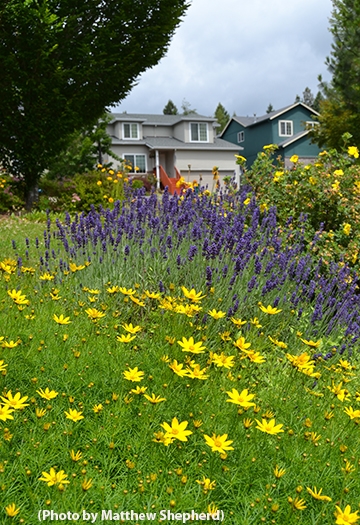
And when you do, you'll be helping the bees, butterflies, beetles and bats.
In June, the National Pollinator Garden Network launched the Million Pollinator Garden Challenge, hoping to register one million pollinator gardens throughout the country within a two-year period.
The gardens? They can be public or private gardens or landscapes that support pollinators. If you don't have access to a garden, you can fill pots with pollinator plants and grace your deck, patio, balcony or windowsill.
The Porland, Oregon-based Xerces Society for Invertebrate Conservation, an international nonprofit organization that protects wildlife through the conservation of invertebrates and their habitat, is a partner. Communications director Matthew Shepherd wrote a blog last June challenging us all to help the pollinators. The Garden Network, coordinated by the National Wildlife Federation, is an outgrowth of the White House's National Pollinator Strategy. "It draws together nearly two dozen nonprofits and organizations with a shared aim, to make gardens better for pollinators nationwide," Shepherd says.
Your garden should offer a diversity of plants rich in nectar and pollen. No pesticides. That bears repeating. No pesticides. And don't mulch your entire garden; leave some bare soil for solitary bees to nest. And it's good to install bee condos for leafcutter bees and blue orchard bees.
You can register your garden on the SHARE website where "visitors will be able to visually track the progress of the campaign," according to the Million Pollinator Garden Challenge. "Registrants can upload photos and videos of their sites, and the map can be sorted by garden type. In addition, a metric to assess pollinator garden actions across multiple organizations will be in effect as the campaign progresses."
What's in Matthew Shepherd's garden in Beaverton, Ore.?
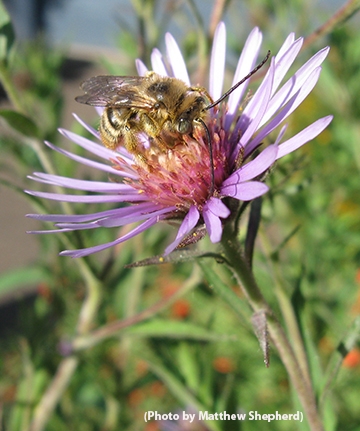
- Apple
- Bee balm
- Black-eyed Susans
- Blanket flower
- Bleeding heart
- Bugle
- California fuchsia
- Columbine
- Cranesbill
- English lavender
- False indigo
- Foxgloves
- French lavender
- Giant hyssop
- Grape hyacinth
- Great northern aster
- Helebore
- Jerusalem artichoke
- Lamb's ear
- Narrow-leaf coreopsis
- New England aster
- Oregon grape
- Pear
- Phlox
- Plains coreopsis
- Prairie coneflower
- Purple coneflower
- Raspberry
- Rhododendron
- Riddell's goldenrod
- Rosemary
- Salvia
- Showy milkweed
- Snowberry
- Tradescantia
- Wood rose
- Wood strawberry violets
"The front is sunny, the back a shady forest edge—part of the reason for the diversity of plants," Shepherd noted.
In our bee/butterfly garden in Vacaville, Calif., we've planted milkweeds (host plant of the Monarchs), passionflower vine (host plant of the Gulf Fritillaries), English lavender, salvias, blue beard, catmint, lantana, Mexican sunflowers (Tithonia), Photinia, butterfly bushes, honeysuckle, blanket flower, California poppies, alyssum, gaura, California fuchsia, crape myrtle, African blue basil, cherry laurels, foxgloves, sedum, dwarf bulbine, oregano, rock purslane, cosmos, zinnias, tomatoes, cucumbers, pomegranates, olives, lemons and tangerines, to name a few.
We're feeding the bees, butterflies and beetles. And other pollinators, such as hummingbirds and moths. We're not feeding the praying mantids. They're feeding themselves.
Attached Images:
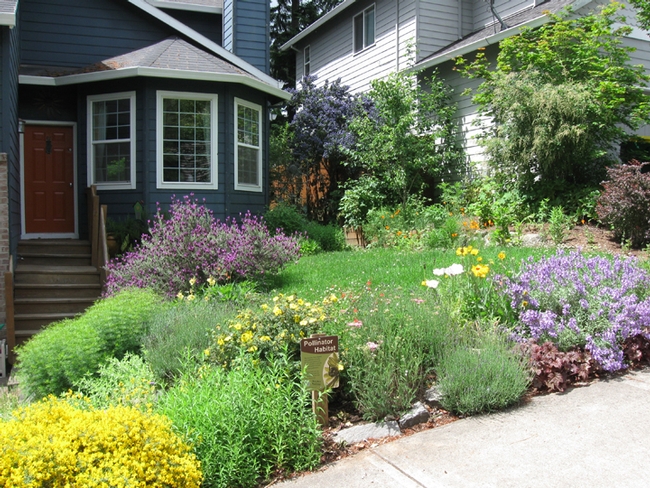
Matthew Shepherd's front yard at his home in Beaverton, Ore., draws scores of pollinators. (Photo courtesy of Matthew Shepherd)
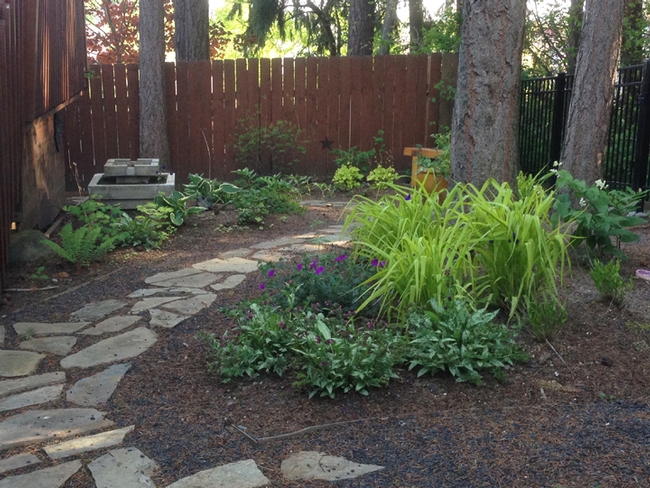
Matthew Shepherd's backyard at his home in Beaverton, Ore. (Photo courtesy of Matthew Shepherd)
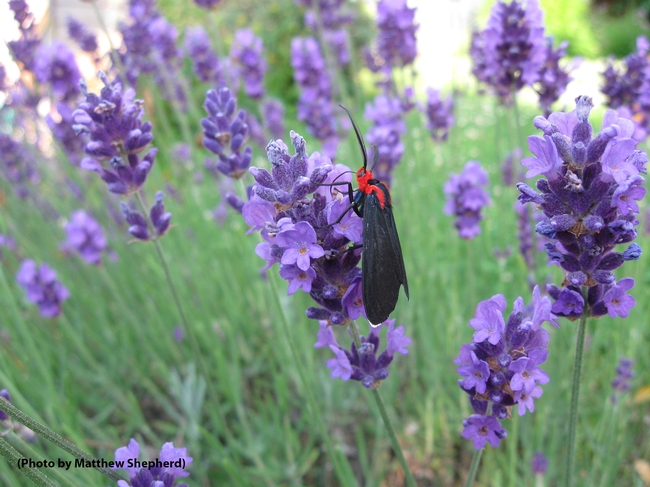
Red-shouldered ctenucha moth (Ctenucha rubroscapus) on English lavender. (Photo by Matthew Shepherd)
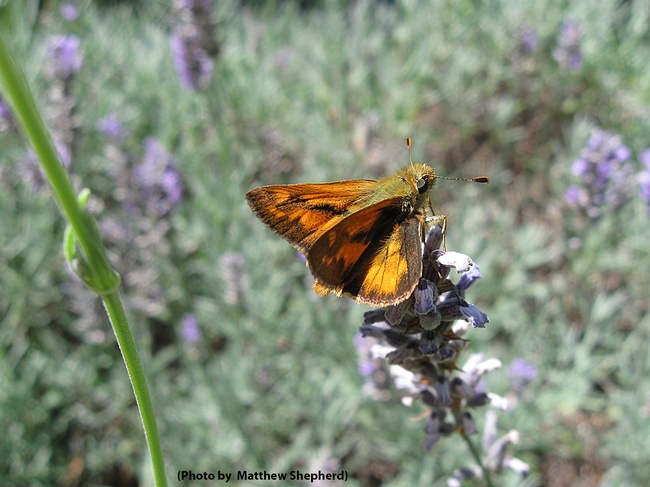
Woodland skipper (Ochlodes sylvanoides) on English lavender. (Photo by Matthew Shepherd)
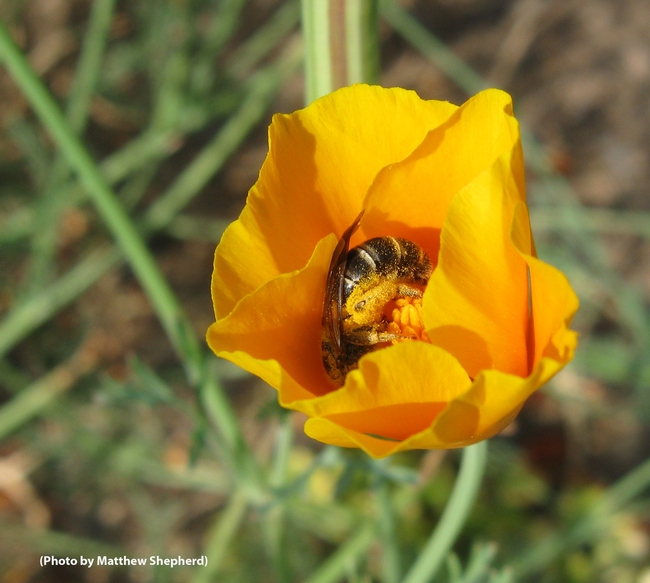
A sweat bee (Halictus sp.) in California poppy. (Photo by Matthew Shepherd)